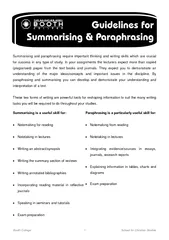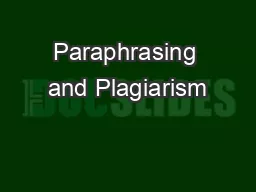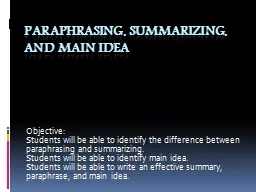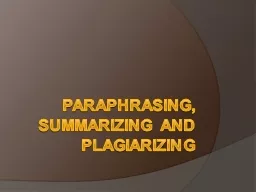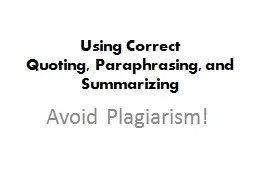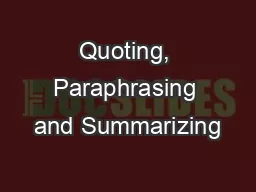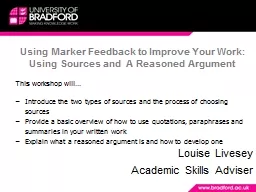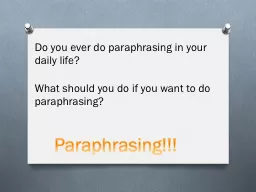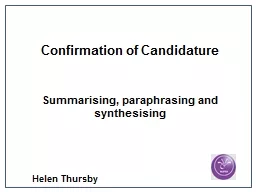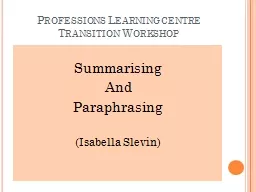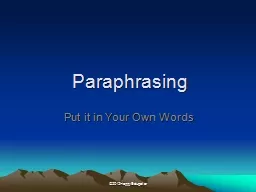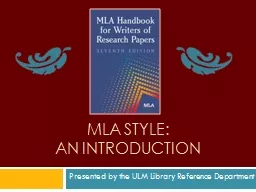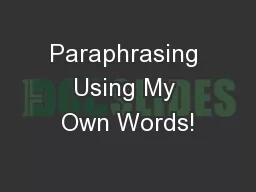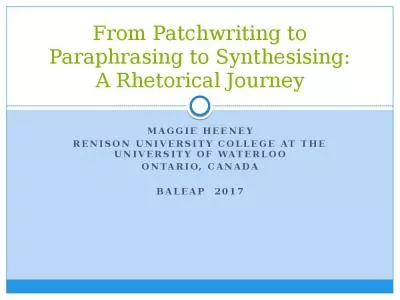PDF-Guidelines for Summarising & Paraphrasing
Author : olivia-moreira | Published Date : 2015-11-06
Booth CollegeSchool for Christian Studies Paraphrasing Paraphrasing presents a spoken written or visual text keeping the same meaning but using different words Paraphrasing
Presentation Embed Code
Download Presentation
Download Presentation The PPT/PDF document "Guidelines for Summarising & Paraphrasi..." is the property of its rightful owner. Permission is granted to download and print the materials on this website for personal, non-commercial use only, and to display it on your personal computer provided you do not modify the materials and that you retain all copyright notices contained in the materials. By downloading content from our website, you accept the terms of this agreement.
Guidelines for Summarising & Paraphrasing: Transcript
Download Rules Of Document
"Guidelines for Summarising & Paraphrasing"The content belongs to its owner. You may download and print it for personal use, without modification, and keep all copyright notices. By downloading, you agree to these terms.
Related Documents

